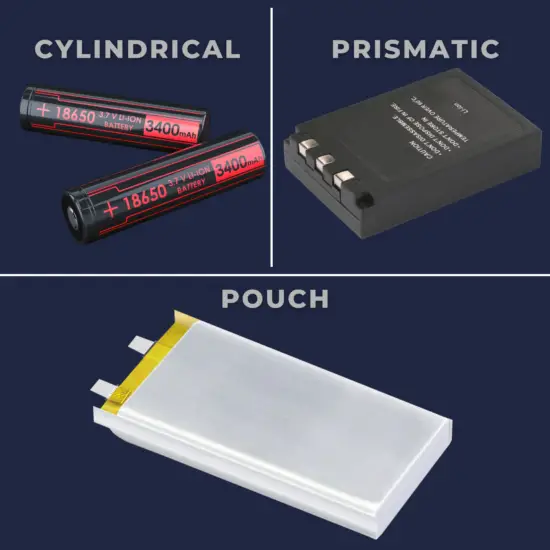Lithium-ion Battery
A lithium-ion battery, also known as the Li-ion battery, is a type of secondary (rechargeable) battery composed of cells in which lithium ions move from the anode through an electrolyte to the cathode during discharge and back when charging.
The cathode is made of a composite material (an intercalated lithium compound) and defines the name of the Li-ion battery cell. The anode is usually made out of porous lithiated graphite. The electrolyte can be liquid, polymer, or solid. The separator is porous to enable the transport of lithium ions and prevents the cell from short-circuiting and thermal runaway.
Chemistry, performance, cost, and safety characteristics vary across types of lithium-ion batteries. Handheld electronics mostly use lithium polymer batteries (with a polymer gel as electrolyte), a lithium cobalt oxide (LiCoO2) cathode material, and a graphite anode, which offer high energy density.
Li-ion batteries, in general, have a high energy density, no memory effect, and low self-discharge. One of the most common types of cells is 18650 battery, which is used in many laptop computer batteries, cordless power tools, certain electric cars, electric kick scooters, most e-bikes, portable power banks, and LED flashlights. The nominal voltage is 3.7 V.
Cylindrical vs. Prismatic vs. Pouch Cells
Li-ion cells (as distinct from entire batteries) are available in various shapes, which can generally be divided into three groups:
- Cylindrical cells with solid bodies without terminals, such as those used in older laptop batteries. Cells with a cylindrical shape are made in a characteristic “jelly roll” manner, which means it is a single long “sandwich” of the positive electrode, separator, negative electrode, and separator rolled into a single spool. One advantage of cylindrical cells compared to cells with stacked electrodes is the faster production speed. One disadvantage of cylindrical cells can be a large radial temperature gradient inside the cells developing at high discharge currents.
- Flat or pouch cells with a soft, flat body, such as those used in cell phones and newer laptops; are lithium-ion polymer batteries. Pouch cells do not have a rigid enclosure and use a sealed flexible foil as the cell container. This is a somewhat minimalistic approach to packaging; it reduces weight and leads to flexible cells that can easily fit the available space of a given product. For pouch batteries, the absence of a case gives pouch cells the highest gravimetric energy density. These batteries are increasingly popular with smartphone manufacturers. Their soft, lightweight design also offers more safety measures than hard metal casings. When a critical issue with a pouch cell occurs – often due to internal pressure overheating or shortening the batteries – the pack will noticeably expand with gas.
- Prismatic cells with rigid plastic case. Lithium-ion (Li-ion) battery prismatic cells are thinner and lighter than cylindrical cells. These cells, coming in rectangular aluminum or steel casing, have fairly long lifespans but aren’t as easy to keep cool compared to their cylindrical counterparts.


